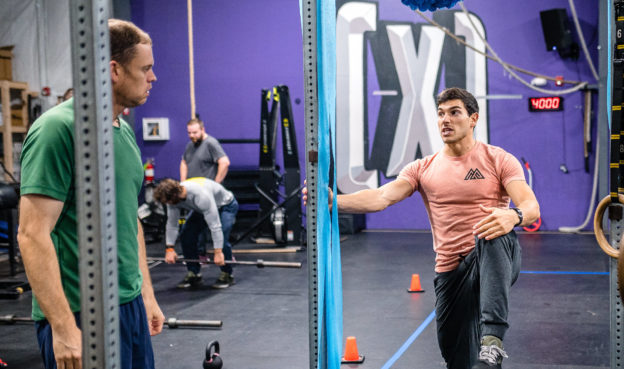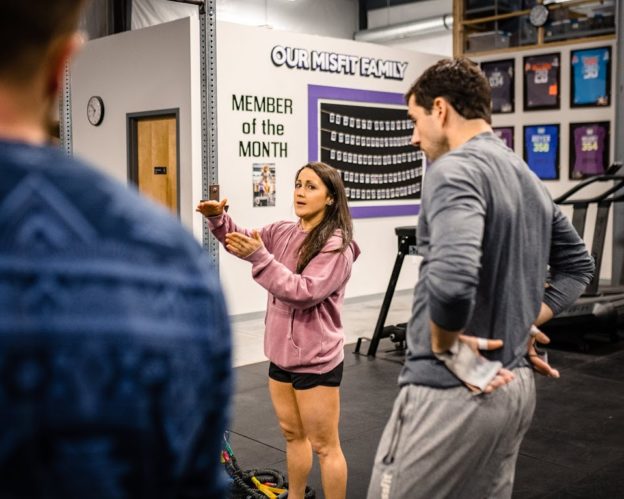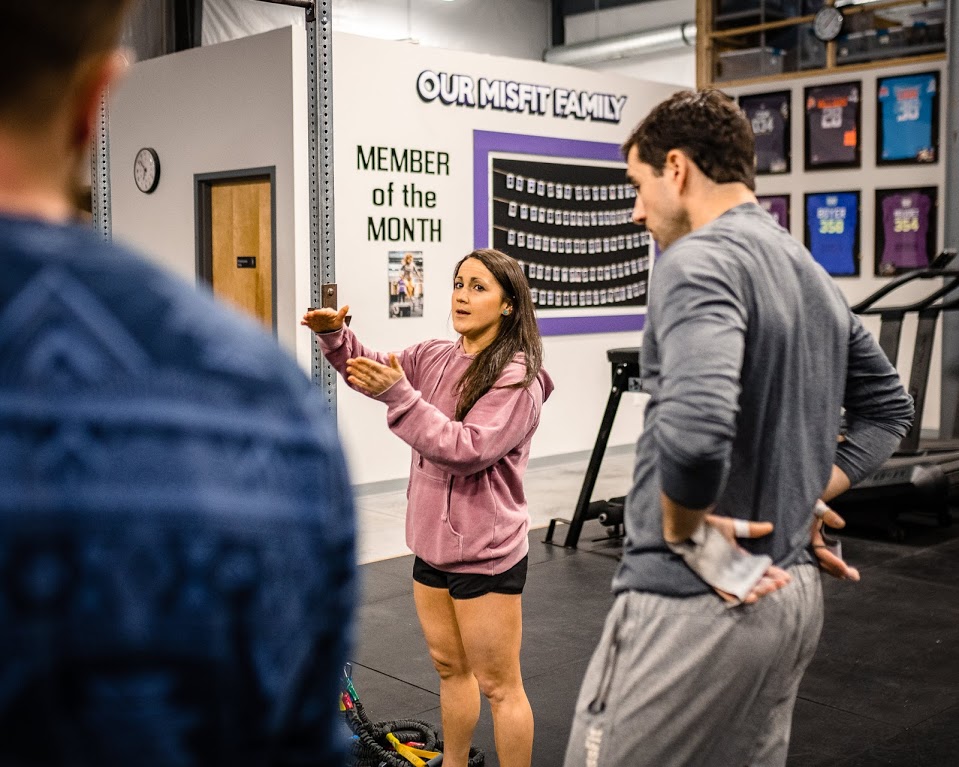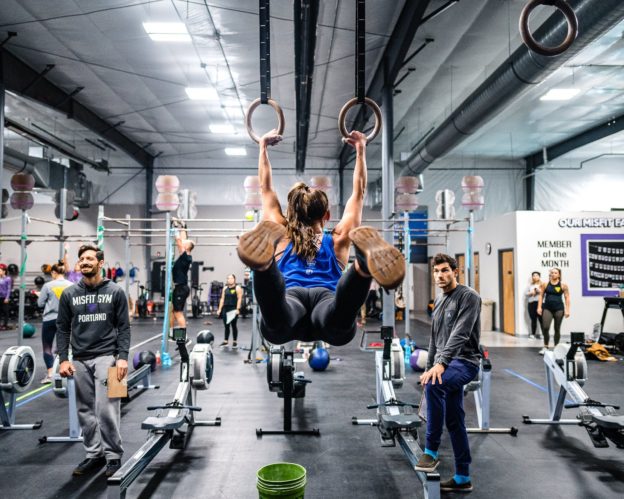
Does Your Gym Do Drop-ins?

If you don’t allow drop-ins, I would urge you to reconsider. Although they sometimes can throw a small wrench into your class plan, the benefits of drop-ins far outweigh the challenges: they can help increase your monthly revenue (especially if your location is in a favorable location for business or recreation), they cost your business $0 to acquire, pay you a rate per class that is significantly higher than your members, and can potentially improve your reputation within both your local community and the CrossFit community as they often leave reviews following their experience. That being said, your gym needs to have a clear drop-in policy and coaches need to be prepared and know how to get them into and through class without missing a beat. Here are some thoughts on how to alleviate any drop-in related headaches.
For Owners
Charge you drop-ins. You own a business, not a fitness-charity. Your time is valuable, your equipment is valuable, your coaches time and attention is valuable, and your paying members are valuable. The drop-in fee will be largely dependent on your location and the amount you feel is fair to visiting exercisers. I would recommend setting your drop-in fee between $25 and $35 which includes the 1-hour class only. Any additional purchases should be in addition to their drop-in rate, not in lieu of (e.g. buy a t-shirt instead of paying a drop-in rate). Just note that if you plan on charging an above average fee for a drop-in, you best be sure you can live up to the price tag – otherwise you’re setting yourself up for trouble.
Second, outline your drop-in policy clearly on your website so that potential drop-ins know what to expect prior to visiting your gym. You can choose to outline the entire policy on your website or you can simply create a “contact us” page or form for drop-ins where they can email for more information on your drop-in policy. Things to consider with your drop-in policy include: a requirement for previous CrossFit/athletic experience, classes drop-ins may attend and the class times, whether or not you will allow them to attend open gym vs. classes only, along with any additional information such as parking.
Outlining your gym’s policies sets you up for the third consideration: making your coaches aware of upcoming drop-ins. Nothing is more stressful for a coach than having an unexpected person drop into their class. Making your coaches aware of these drop-ins will ensure they properly prepare themselves for a client or clients they have not have experience with. Experienced coaches should have no problem integrating drop-ins into their classes, regardless of the drop-in’s experience. If you have a policy where drop-ins are not required to contact you ahead of time, you should ensure your coaches have enough knowledge and skill to adapt to an unexpected drop in, as it can be a challenge. Now let’s talk about strategies on how we can make this easier on your coaches, from the perspective of coaching a drop-in.

For Coaches
The first step in working with any drop-in is getting to know them, not unlike what you’d do with any other client within your community. This conversation is an opportunity to learn their name, where they are from, what their experience with CrossFit is/has been, and inquire about any injuries or limitations they may have. This is usually a quick conversation, but serves two purposes for the coach. First, it helps build an immediate rapport with the drop-in and alleviates some of the anxiety they are sure to feel while working out in a new place. Second, and probably more importantly in the case of a drop-in, it helps the coach formulate a plan for executing the class WOD in a safe and effective manner.
Next, during your warm-up and skill work pay very close attention to how the drop-in moves. The warm-up should allow you to screen the drop-in to determine their experience and potentially their capacity to perform the WOD safely. I would strongly recommend asking the athlete to demonstrate the movements you prescribed in the warm-up to ensure their competency.
Third, when you reconvene to discuss the goals of the class WOD, be very specific with the intent and purpose of the workout. Clearly outlining the desired stimulus (amount of rounds athletes should complete, time domain, rep ranges, and/or loading prescribed) demonstrates your competency as the coach and (hopefully) gives the drop-in to the desired intent of the workout so they can self-scale. Also, depending on the workout, include logistical information like running loops and the location of equipment in your box. Furthermore, to ensure a safe and positive experience at your box you should be hyper-aware of the drop-ins capacity and technique. A common issue we see as coaches is Harry Hard-O and Rebecca RX tell us “Oh I can do this RX, no doubt. I can definitely do ‘x’ ” only to see them strip weight off their bar, reduce the number of repetitions required, or worse, move poorly and “ogre-their-way” through it. An easy fix for any “wanna-be RX’ers” is to have them perform the movement in question with a high heart rate. For example, the class may have 225lbs deadlifts for 25 repetitions. Ask the athlete to perform 5-10 burpees as quickly as they can and then perform the movement in question. Oftentimes, the athlete will then “get the message” and adequately scale for themselves. If this strategy does not get the message across, the next step is to kindly deliver the message that you are the coach, you’re looking out for them, and you decide what happens while you’re coaching class. If you are still met with resistance, my suggestion is to explain to the drop-in that they can either do what you’re asking or they are welcome to leave (hopefully it does not get to this point, but I would rather have 1 angry drop-in than a lawsuit, but hey, maybe that’s just me). It rarely happens, but being prepared is better than not.
Lastly, follow up with your drop in, thank them for attending your box and invite them back for another workout when they come back to your city (assuming you’d like to have them back). You may also request that the drop-in leave you a Google or Facebook review so that future drop-ins can see the type of experience you offer. If you follow the tips outlined within this article you can set yourself up for a positive experience with drop-ins, increase your profits and ensure that your coaches are set up for success.
Written by Matt Sherburne


Responses